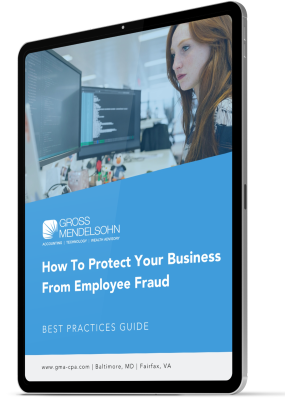This is the story of a chief financial officer whose diligent review of his sporting goods retailer’s monthly operations resulted in the discovery of employee theft.
The players in this story:
-
A sporting goods retailer with multiple locations
-
The sporting goods company’s CFO, accounting manager and head of operations
-
The store manager of one of the sporting goods company’s locations
-
The insurance company for the sporting goods retailer, which filed a claim for an employee theft loss
-
Gross Mendelsohn’s forensic accountants, who were hired by the insurance company to evaluate the claim
Diligent Monitoring of Gross Profit Margins by CFO Led to Discovery of Fraud
In July, the sporting goods retailer’s CFO was reviewing the monthly operating results for each of its stores and noticed that the gross profit percentage for one store dropped significantly in May as compared to prior months. The store’s gross profit percentage was also notably lower than the gross profit percentage of the company’s other stores.
The CFO thought there might have been a posting error in the general ledger, so he asked the accounting manager to review the May sales and cost of goods sold postings for that store. The company had a point-of-sale (POS) register system. The accounting manager verified that the sales and cost of goods sold general ledger accounts for that store properly reflected an entry each day from the POS system for the store’s sales and cost of goods sold.
Although the June monthly operating statements by store had not yet been completed, the CFO reviewed the same store’s sales and cost of goods sold amounts for June and noted that the store’s gross profit percentage for June was even lower than May.
The CFO sent the company’s head of operations to that store to investigate the cause of the drop in gross profit. The head of operations met with the store’s manager in late July, explained that the store’s gross profit margin for May and June were both abnormally low, and asked the manager if she knew what may have caused the problem.
Initially, the manager said she was not sure but thought it might have resulted from selling off a lot of old merchandise at marked down prices. The head of operations was skeptical as this store’s amount and mix of merchandise was similar to most of the other stores.
Head of Operations Learns How His Store Manager Pulled Off the Theft
The head of operations told the manager that he planned to perform a detailed review of the store’s sales transaction data from the POS register system. The manager then confessed that she had been stealing cash from the register. The manager explained that occasionally, after a customer paid in cash and the cash sale was entered into the register, she would go back into the register system and change the sales price to $0.01. At the end of her shift, she would steal the register cash in excess of what the POS register system reflected as total cash received. She admitted that she had done this during May, June and July. The manager’s employment was terminated immediately.
Digging Deeper Into POS System Revealed Details of the Theft
The head of operations generated reports from the POS system for that store’s sales transactions during May, June and July and was able to identify numerous sales for which the sales amount had been changed to $0.01. The POS report identified the terminated manager as the cashier for each of those transactions.
The head of operations used the POS system to search for sales transactions that may have been altered in other months during that manager’s period of employment and discovered a few transactions in March and a few more transactions in April. So, the manager had started stealing in March, with just a few transactions that did not total enough to significantly impact gross profit. She stole a little more in April, but still not enough to distort gross profit. But after two months of stealing and not being caught, the manager got greedy and stole much larger amounts in May, June and July, which did cause a significant drop in gross profit at that store.
What We Found When Our Forensic Accountants Evaluated the Loss
The company submitted a claim to its insurance company for an employee dishonesty loss totaling $32,636. The insured computed the loss amount claimed using the retail price reflected in the POS system for the sales transactions that the terminated manager had altered.
Our forensic accountants reviewed the POS reports and verified the altered sales transactions, but we determined that the loss amount was overstated, as the insured’s actual selling price is frequently lower than the retail price reflected in the POS system. After adjusting the sales amounts based on actual selling price data, we calculated the insured’s loss to be $26,506.
The Moral of the Story
This case illustrates the importance of management’s timely review and analysis of monthly financial reports. By promptly investigating a drop in the gross profit percentage at a store, management discovered an employee theft shortly after it began and was able to minimize the loss. Frequently, embezzlements we have investigated have continued over a period of years before they are discovered, not to mention frauds that are never discovered.
Need Help?
Our Certified Fraud Examiners help businesses put measures into place to prevent fraud.
Contact us online or call 800.899.4623.
This article was originally published in February 2018 and was updated in May 2024.


